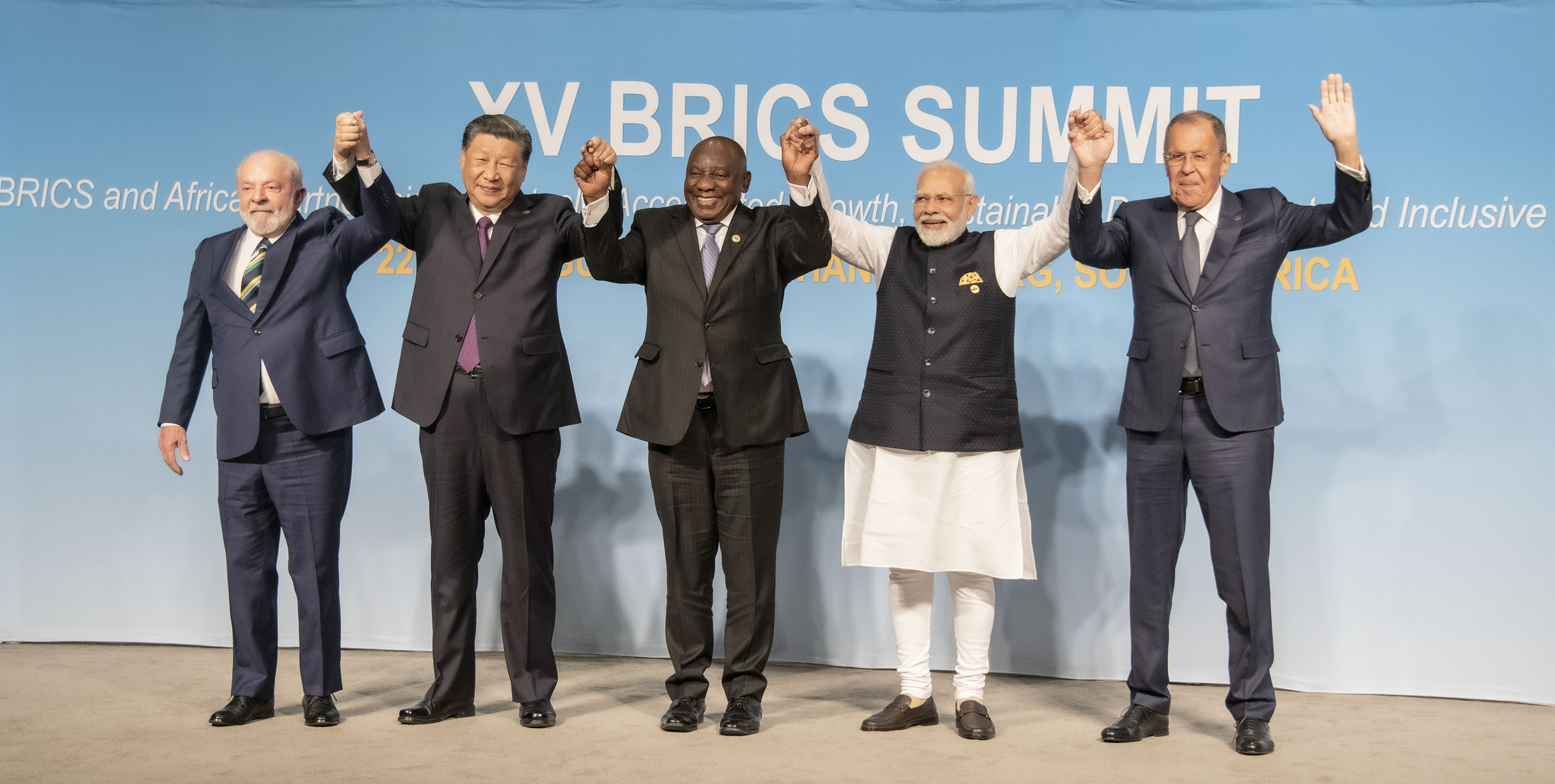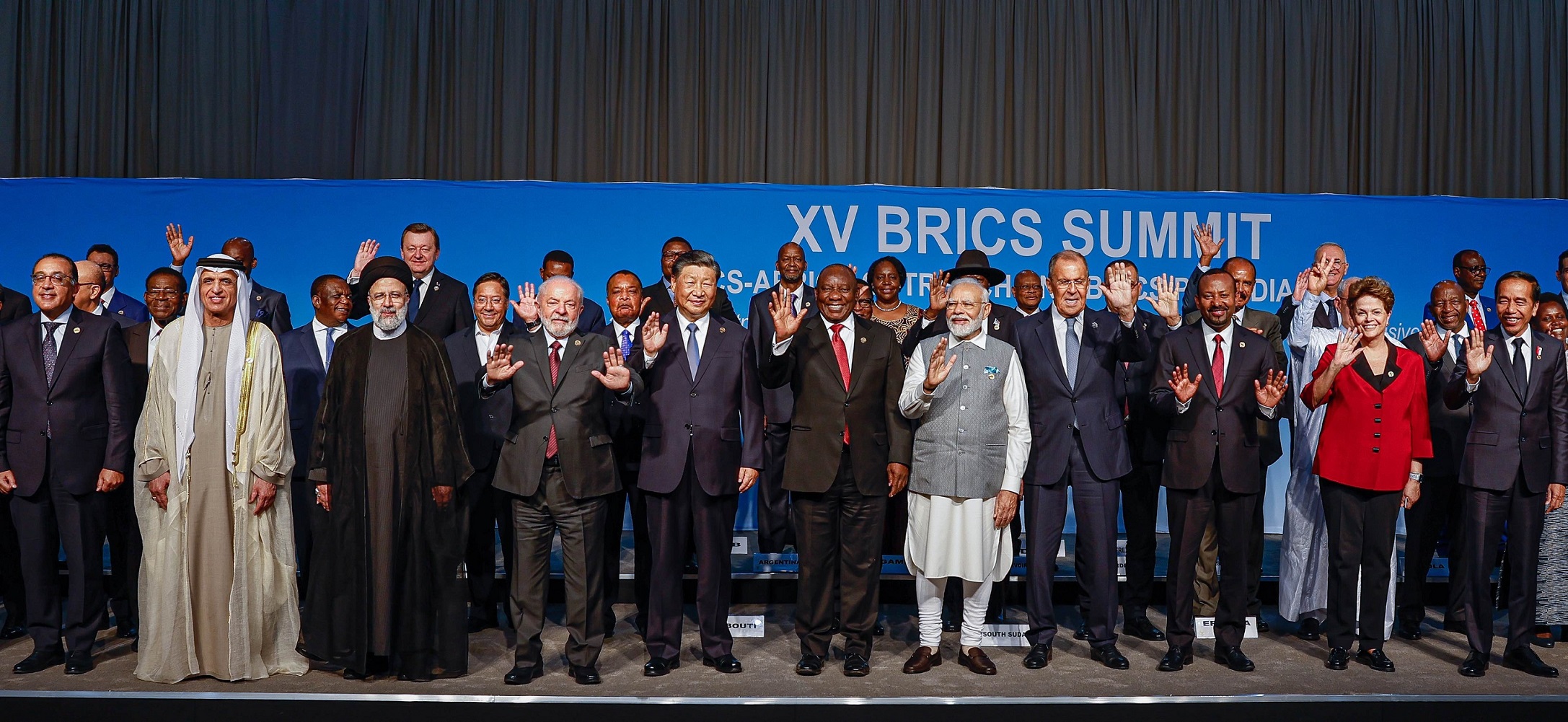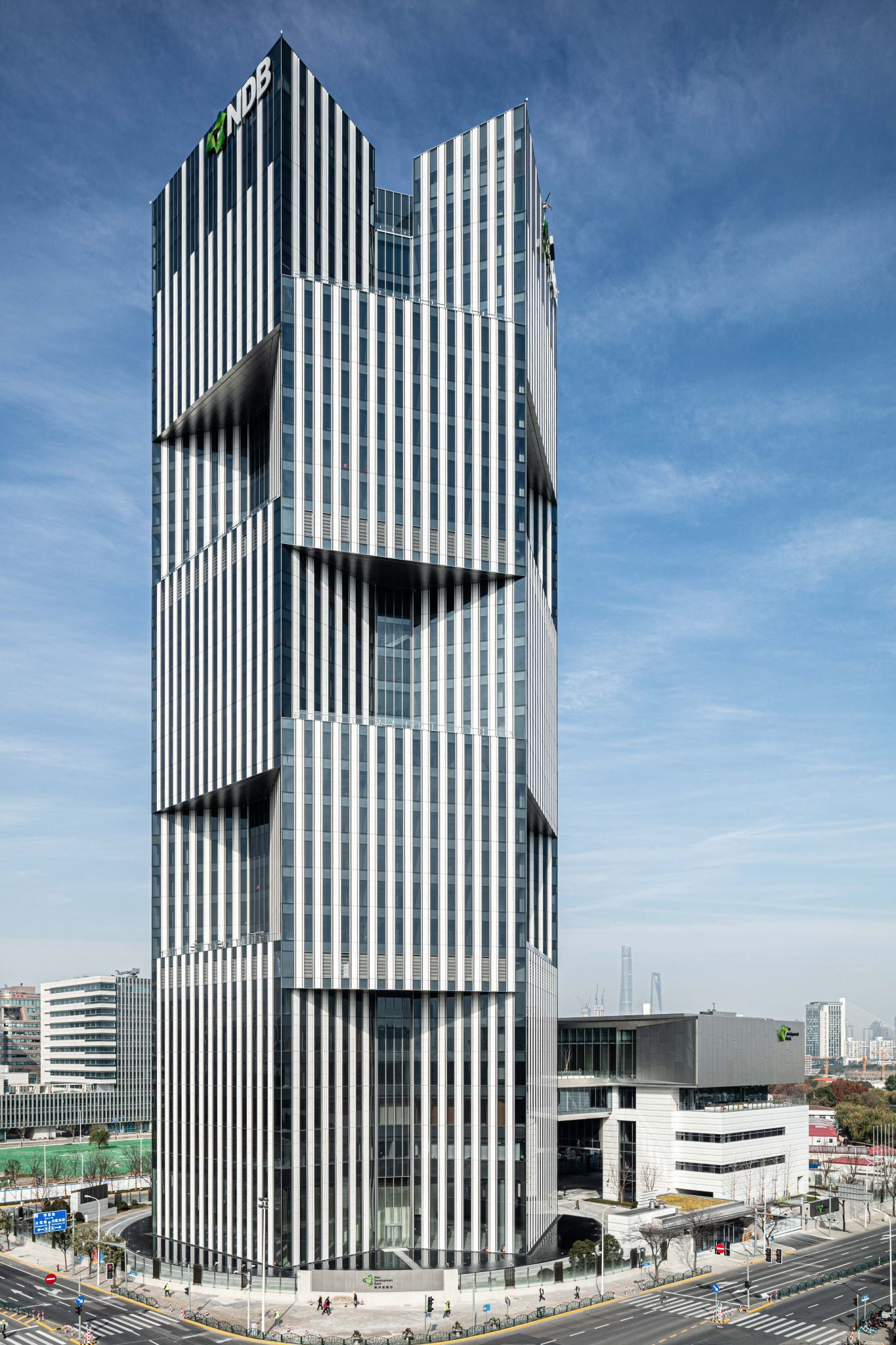BRICS Explained | 16th BRICS SUMMIT | WESTERN POWERS | EMERGING ECONOMIES | BRICS+

Russia will host the 16th BRICS Summit this October, which is scheduled for the 22nd to 24th.
The last summit held at Johannesburg in August 2023 concluded with the leaders from the world’s emerging economies and BRICS founding members — Brazil, Russia, India, China and South Africa consenting to expand for the second time adding six more members — Argentina, Egypt, Ethiopia, Iran, Saudi Arabia and the United Arab Emirates — to the informal bloc. This marked a pivotal moment in its evolution to become BRICS+.
However, Argentina, whose biggest trading partners are Brazil and China, eventually withdrew from joining. So far, 40 other countries have expressed interest in joining the forum.
This article explains and analyses BRICS vis-a-vis a counterweight to the West-led world order.
Origin of BRICS
During the time of their simultaneous economic growth, Jim O’Neill, an economist at Goldman Sachs, a global investment banking, securities, and investment management firm, introduced the acronym BRIC in 2001 to collectively refer to the bloc of the world’s emerging power economies — Brazil, Russia, India and China, who had common aspiration and similarities other than their economic interests and might — a fair standing equivalent to other advanced economies.
In September 2006, the foreign ministers of BRIC initiated high-level diplomatic meetings in New York at the sidelines of the United Nations General Assembly. The bloc held its first-ever summit at Yekaterinburg in Russia in 2009, which is considered as its founding year.
The opponents of the bloc during the early 2000s said that BRIC was too diverse to be grouped together and regarded as “a marketing ploy” of Goldman Sachs.
Nevertheless, BRIC expanded into BRICS with the admission of South Africa in 2010.
Together the countries account for over 40% of the global population and around a quarter of the global economy.
With time, the bloc has shaped into a geopolitical entity in its rights, yet remains an informal group so far.
Reshaping global governance and multipolarity
The BRICS founding members share a common view. That is the current global order is unfair to the Global South, which comprises over 80% of the world’s population and accounts for 35.43% of the world's total GDP (up from 21.37% in 2000). In contrast, G7’s share has waned from 43.28% to 29.64%.
They further hold the belief that the era of clearly defined geopolitical phases is now behind them. For instance, the Cold War between the US and the USSR; the post-Cold War period characterised by US dominance; and support from institutions like the United Nations and Bretton Woods, which were established to maintain global order that primarily benefited the US and Europe. Russia’s invasion of Ukraine and the UN’s ineffectiveness and limitations in resolving wars such as Russia-Ukraine and Israel-Palestine affirm this.
Emerging economies in the BRICS that face incremental challenges in pursuit of their economic development and global leadership roles are seeking a way out. In the past, they remained largely excluded from global decision-making while their paths were charted by the Western powers led by the United States. Take instances of exclusion in responses to global poverty, wars, pandemics and climate change.
Consequently, global affairs are already experiencing a shift toward multipolarity — both geopolitically and economically. This perspective is increasingly recognised by many today.
While BRICS may not have an official statement on this, its major stakeholders China and Russia, who are also its major backers, have. Delegates from other member countries have also shared similar views on BRICS in different forums.
China’s dramatic rise and deepening relationship with Russia demonstrate pushback against the existing US-led global order that was set up some eight decades ago. Russia and China have tried to antagonise the Global South against advanced capitalist economies i.e. G7.
In a joint statement released in 2022, China and Russia argued that “humanity is entering a new era of rapid development and profound transformation” and “it sees the development of processes and phenomena such as multipolarity… and transformation of the global governance architecture and world order.”
It further emphasises, “A trend has emerged towards redistribution of power in the world” while “some actors representing but the minority on the international scale continue to advocate unilateral approaches to addressing international issues and resort to force.”
Later in June 2024, foreign ministers of BRICS countries released a joint statement with a similar gist when they met in Russia.
New members such as Saudi Arabia and the UAE also have shifted their diplomatic strategies, moving away from reliance on the US, particularly in oil production to harmonising relationships with sanctioned nations like Iran. This change has allowed both Arabian Gulf countries to deepen ties with China and India.
Yet, BRICS for now is a coalition of major emerging economies seeking to expand. While it encompasses small nations from the Global South such as Ethiopia, its primary focus so far remains on fostering collaboration among its founding members and other bigger and influential economies. Its dynamics for now reflect the interests of specific countries with China and Russia at the centre rather than a unified Global South agenda. Additionally, the acronym BRICS which is limited to its founding members doesn't convey that impression that it will effectively represent their agenda.
Overall, it represents a blend of both developing economies and broader Global South aspirations, but its effectiveness in advocating for the entire Global South is still debatable.
Competing aspirations with China at the centre
China is at the centre of the bloc with a substantial share of global resources and 70% of the bloc’s combined GDP. There’s little doubt that it wishes to use the platform to demonstrate its geopolitical and economic influence as a rising superpower, going beyond its economic relationship with the continent of Europe and into leadership roles in global affairs to reinforce its dominant position.
In 2023, China mediated a deal in Beijing to restore the relationship between Iran and Saudi Arabia. So far, four Middle Eastern countries — Saudi Arabia, Iran, the UAE and Egypt — have joined BRICS+, a testament to China’s aspirations and regional presence.
Russia, on the other hand, and at the moment, grappling with isolation and economic sanctions imposed by the European Union and the United States after it invaded Ukraine, wants to contain the effects of those sanctions. An expanded bloc and de-dollarisation of economic relations between the countries can do that.
“China and Russia in particular hope to leverage the group’s combined economic weight to counterbalance the US and more broadly Western influence in global politics,” Graeme Thompson, an analyst with the Eurasian Group, in an interview with Business Insider stated.
Acutely attuned to the strategic objectives pursued by China and Russia, India — the second largest economy in the bloc — seeks to capitalise on economic opportunities and strengthen its global standing. Meanwhile, it has fostered a stronger relationship with the United States.
Brazil and South Africa share the goal of diversifying their trade and drawing in investments through engagement with BRICS.
China is Brazil’s largest trading partner while the New Development Bank (NDB), a multilateral lender formed under BRICS has former Brazilian President Dilma Rousseff, who is also the incumbent Brazilian president’s political protegee, as its chief.
Furthermore, Brazil, India, and South Africa are actively pursuing permanent seats at the UN Security Council, seeking to join established members like Russia and China, which introduces a competitive dynamic within the bloc.
Speaking with reporters last year, White House National Security Advisor Jake Sullivan said, “This is a very diverse collection of countries... with differences of view on critical issues.”
And with the addition of new members, experts like Margaret Myers emphasise that the inclusion of major oil-producing countries enhances the bloc’s global economic significance.
Conversely, Ryan Berg argues that the expansion could serve the political interests of China and Russia, potentially diminishing the influence of smaller BRICS members like Brazil and India.
However, newly elected Argentine President Javier Milei has decided to withdraw from BRICS, reflecting his government’s critical stance on China and the country’s economic struggles. Instead, he remains committed to strengthening bilateral ties with BRICS nations.
Differences in institutional regime and member opinions
The BRICS comprise members from four different continents with different histories and national interests, economic capabilities and institutional regimes.
Unlike G7 countries which have the same institutional regime with similar values such as democracy, rule of law, open markets and human rights, BRICS practises different regimes across its founding member countries.
Brazil, India, and South Africa are characterised as democratic states, whereas Russia and China are often identified as having authoritarian communist systems.
Similarly, member countries such as India and China are often at odds with each other, extending to frequent border conflicts as seen in the past few years. Their border dispute has been a subject of contention for decades.

Their economic capability, development and interests are also likely to influence the decision-making of members through BRICS. For instance, Russia has a per capita income of $13,817 while India’s stands at $2,484.8.
The political regimes and systems of newly admitted members such as Saudi Arabia, Iran and the UAE also vary with those of Egypt and Ethiopia, and even founding members. For this reason, some consider it a bloc of undemocratic countries.
Despite similarities in goals such as economic growth, divergent viewpoints also persist on BRICS itself due to the ever-changing landscape of international relations and the continued influence of the West. No countries would want to be in the bad books of the big powers. For instance, India cannot snub Russia, nor the US.
Likewise, Brazilian President Luiz Inácio Lula da Silva (referred to as Lula), who is considered a key architect in shaping BRICS in its formative years as a geopolitical identity, does not view the bloc as an alternative to the G7 or the United States. Yet, he advocates for employing local currencies in the bloc’s financial transactions. South African Foreign Minister Naledi Pandor shared a similar view to Lula on BRICS expansion. China and Russia have a rather clear stance on these subjects.
Amidst the differences, the BRICS persist. However, it is yet to see how the cooperation between member states will materialise.
New Development Bank: A counterbalance to Bretton Woods?
BRICS countries hold just 15% of the voting power at the International Monetary Fund (IMF) despite their economic might. Frustrated with their governance including with the other Bretton Woods institutions, such as the World Bank, they have sought to increase their influence and address developmental inequalities.
This pursuit led to the establishment of the New Development Bank (NDB) in 2014 as an alternative where all the member countries have one vote and no veto powers and focus on providing financial resources to emerging economies.

With an authorised capital of $100 billion, it is headquartered in Shanghai and has regional offices in the rest of the four founding members.
Recently, the NDB and nine other multilateral development banks (MDBs) announced shared principles to align their financing operations with the Paris Accord. The NDB has pledged 40% of its total funding between 2022 and 2026 to projects aimed at climate change mitigation, facilitating a transition to a climate-resilient future for its member countries. In 2021, four new members — Bangladesh, the UAE, Uruguay, and Egypt — joined the NDB.
The bank targets urgent infrastructure development needs in emerging markets, where research predicts a $15 trillion infrastructure gap by 2040. The NDB offers a viable alternative for developing countries that have been adversely affected by the IMF’s structural adjustment programs and austerity measures, which often result in reduced funding for essential services and infrastructure, leading to social unrest.
Critics contend that institutions such as the World Bank have increasingly prioritised issues like climate change, the refugee crisis and governance, often at the expense of direct infrastructure investment. In the World Bank, wealthier countries, particularly the United States and other G7 members, wield significant decision-making power due to their substantial financial contributions. In contrast, the NDB diverges from this model.
Also, contrary to the World Bank, which employs over 10,000 staff and spends $70 million annually on its governance structure, the NDB operates with a smaller, more efficient team.
However, concerns remain regarding China’s influence in the NDB, reminiscent of criticisms aimed at the Asian Infrastructure Investment Bank (AIIB) and its ties to China’s Belt and Road (BRI) initiative.
Focusing funding mainly on Chinese initiatives could jeopardise the NDB’s core mission, underscoring the importance of addressing the diverse needs of its member countries. As China emerges as a global superpower, its influence in multilateral development banks like the NDB necessitates close examination.
There are also worries that project selection may lack broad consensus, transparency in environmental assessments and sufficient stakeholder consultations during the bank’s initial years.
However, the NDB has the potential to complement Bretton Woods institutions by financing essential development and infrastructure projects in underserved areas.
The agenda of de-dollarisation
De-dollarisation — reducing dependence on the US dollar as a medium of exchange — remains one of the top agendas of the BRICS since its inception. The internationalisation of the US dollar globally advanced its hegemony. The US dollar serves as a source of US prestige exerting a global influence and impact.

The US dollar remains the dominant currency for cross-country transactions in many developing countries. Its long-standing stability has led numerous countries to denominate their external debts in dollars.
For Russia, using local currencies aims to reduce the financial impact of US and European sanctions.
Russia often faces economic sanctions at the hands of the US and European Union, which bereft major European countries to deal with Russia in dollars. In line with their trade interests, the latter countries consistently yet unofficially express criticism of the dominant position held by the US dollar, and advocate for an alternative global currency. Nevertheless, they have not actively promoted a single alternative to replace it.
Those sanctions however have a basis. The US enacted sanctions against Russia in response to cyber attacks in 2021 and the Russian invasion of Ukraine. Such sanctions limited the ability of Russian financial institutions to borrow in the denominated US dollar leading to ruble depreciation and economic stagnation.
It’s the same with Iran.
For Egypt, Ethiopia and Argentina, economic challenges stemming from the US monetary policy and their own fiscal issues have resulted in dollar shortages and as a consequence decline in foreign investment, increased borrowing costs and negative impacts on local businesses — contributing to the depreciation of their local currencies against the dollar.
The need for a new global reserve currency was highlighted at the 2009 summit, marking a significant shift with notable implications for the global economy. Russian President Vladimir Putin reinforced the need for de-dollarisation in the 15th Summit. He stated that the agenda is gaining momentum while discussion vis-a-vis issues of local currency will also take place.
“A balanced and irreversible process of de-dollarisation of our economic ties has been gaining strength, with efforts undertaken to develop efficient mechanisms for mutual payments, as well as monetary and financial control,” said the Russian President delivering his address virtually. Due to concerns about in-person attendance, as South Africa, a signatory of the Rome Statute that established the International Criminal Court (ICC), holds the responsibility to apprehend him.
After the invasion of Ukraine by Russia, the latter faces more than 17,000 sanctions. The trade with the US and Europe has drastically declined. To decrease the economic cost of the transaction, Russia has accelerated trade with Asian countries. Trade between India and Russia is also settled in their native currencies.
China also shares concerns about the hegemony of the US dollar while aiming to reduce vulnerability to potential economic coercion. One of the objectives behind establishing the China-led Asian Infrastructure Investment Bank (AIIB) is to promote the role of the Chinese yuan, alias renminbi, in global finance.
The weaponisation of the dollar in sanctions against Russia and Iran by the US compelled the developing countries to seek alternative currencies for trade and investment, argues Shirley Ze Yu, a Senior Fellow at the London School of Economics.
There have also been talks about a multi-currency reserve system.
Some researchers argue that the 2007/08 financial crisis stemmed from the lack of institutionalised currency cooperation, suggesting that a multi-currency reserve system could address the liquidity issues caused by low interest rates.
The challengers to the US dollar are the euro and renminbi. But the euro has stagnated due to a lack of denominated assets in the financial market while the renminbi lacks free international capital flows and financial market size compared to the scale of the US dollar.
Robert Greene, a nonresident scholar at the Carnegie Endowment for International Peace, believes that because of higher costs and inefficiencies of non-dollar currencies in cross-border transactions, de-dollarisation is a long road. Currency pairs involving dollars are more liquid and less costly to exchange than currency pairs of emerging markets, he added.
Read More Stories
Kathmandu’s decay: From glorious past to ominous future
Kathmandu: The legend and the legacy Legend about Kathmandus evolution holds that the...
Kathmandu - A crumbling valley!
Valleys and cities should be young, vibrant, inspiring and full of hopes with...
Today’s weather: Monsoon deepens across Nepal, bringing rain, risk, and rising rivers
Monsoon winds have taken hold across Nepal, with cloudy skies and bouts of...